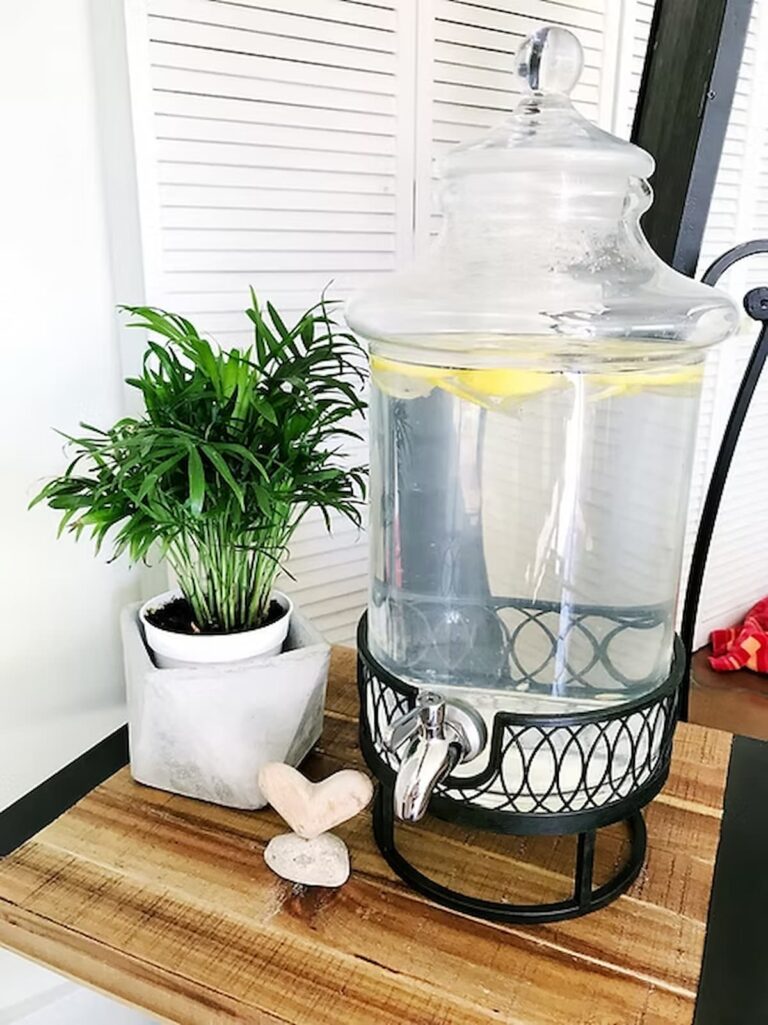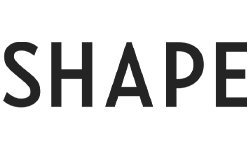These tiny but mighty healthy habits are easy to add and can make a huge difference for weight loss, gut health and wellness goals.
Small changes made over time can yield incredibly life changing results. Never discount the power of small daily changes.
Today I’m sharing 77 tiny (but powerful) ways you can massively improve your health while also achieving your weight loss or wellness goals.

1. Magnesium supplement before bed
Magnesium helps the muscles and body relax. Unfortunately, a lot of people are quite low in this mineral which can cause restless or poor sleep. Using a magnesium supplement before bed can help to boost sleep quality.
2. Standing desk
This is a recent addition to my routine! A standing desk can help reduce the amount of time you’re sitting as well as improve overall posture. I got a “sit-stand” desk so that I can switch back and forth when needed.
3. Walk 250 steps every hour
As a nation we’ve become quite sedentary. On average, most folks are only getting about 3,000 to 4,000 steps per day. The health and weight loss benefits of walking are typically seen by around 8,000 steps per day. Breaking up the work day with 1-2 minute walks (about 250 steps) every hour helps to raise the overall step count.
Some fitness trackers, like the FitBit, will alert you when you need to get 250 steps before the hour ends.
4. Apple cider vinegar before a meal
About one tablespoon of apple cider vinegar diluted in 8 ounces of water has been found to stabilize blood sugar levels of a meal.
We use this tip in our Complete Intermittent Fasting Bundle to help maximize the benefits of the fast.
5. Drink 1/2 caffeine coffee
Or go for 1/3 caff! The more caffeine we drink, the more we need.
Having too much caffeine can disturb our sleep and lead to increased hunger levels the next day.
There’s a bit of a transition period at first, but once you make the switch the body adjusts to your new normal (and lower) caffeine level.
I love using the 1/3 caffeinated coffee from Purity. You can find it HERE.
6. Mold-free coffee
A lot of coffee can be contaminated with mold.
This mold can have different effects in different people. For me, it made me very anxious. Again, I made the switch to Purity Coffee (which lab tests every batch of coffee for mold toxins) about 7 years ago and I love it.
7. Have water between alcoholic drinks
If you drink alcohol, try having a full glass of water between every alcoholic beverage. Not only will you be more hydrated and feel better the next day, it’ll also naturally decrease your alcohol intake.
8. Don’t scroll while eating
People who use their phone while eating tend to eat more than those who don’t. This is likely because it’s hard to pay attention to the “fullness” cues that the body is sending when you’re being distracted by instagram reels.
9. Use electrolytes
Electrolytes are crucial for sending signals from the brain to the rest of the body. It’s also needed for fluid balance and muscle recovery.
I love the brand LMNT for high quality, zero sugar electrolytes.
10. Eat meals with people
Eating meals with your family has been shown to reduce the risk of depression and disordered eating patterns. This can also work if you regularly eat meals with other loved ones, like friends and a significant other.
11. Eat your protein first
Focusing on the protein portion of a meal first helps to stabilize blood sugar levels and increase the feeling of fullness.
For example, if you’re eating meatballs with some red lentil pasta, eat the meatballs first before the pasta.
12. Have a bedtime
This might seem basic, but from my experience, many people do not have a set bedtime. Sticking to a bedtime helps to ensure you get high quality and deep sleep, which is very important for achieving a weight loss goal and reducing next day sugar cravings.
13. Try creatine monohydrate
If you have a history of veganism or vegetarianism or if you don’t eat very much meat, you could be low in this crucial amino acid.
Creatine has well known athletic benefits, but it also has impressive cognitive benefits. Studies have found creatine supplementation could help improve short term memory, too.
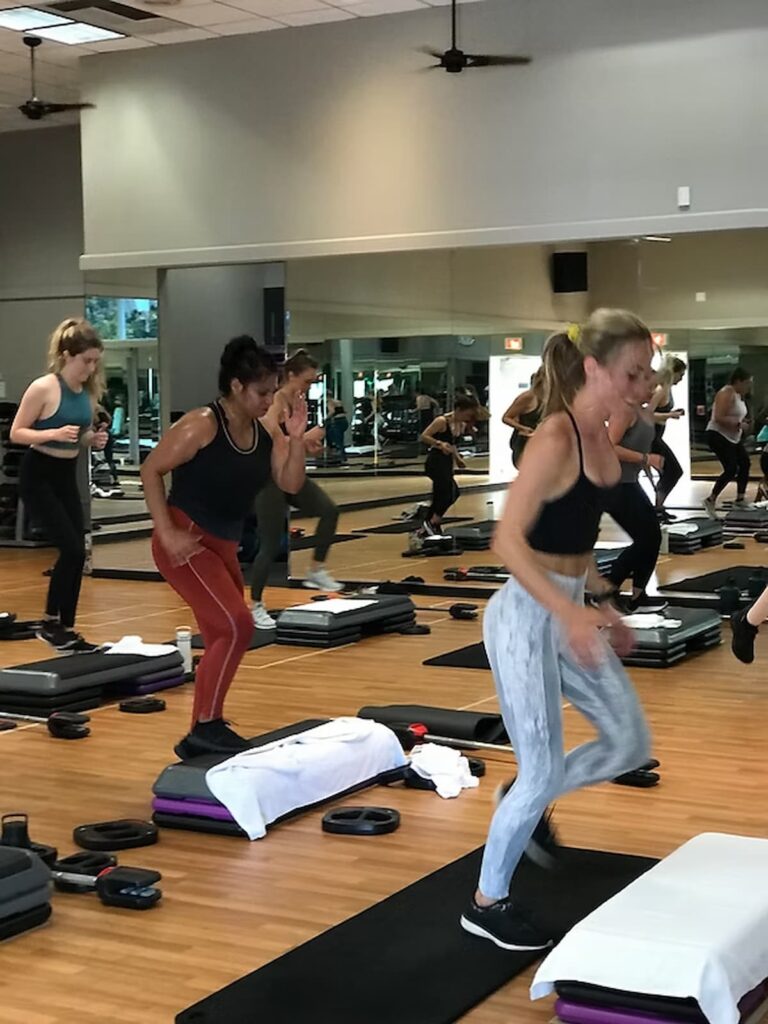
14. Lift heavy weights
This is relative to your fitness level. For example, my husband lifts about 100 extra pounds than I do when we hit the squat rack. Lifting relatively heavy weights is important for improving the metabolism during the weight loss process and for preventing bone diseases like osteoporosis.
Work with a personal trainer if you aren’t sure on form!
15. Eat raspberries
Raspberries are very high in fiber and low in sugar. Just one cup has about 7 grams of fiber and 7 grams of sugar.
16. Have coffee dates
Instead of hitting the bars, ask your friends to go on a coffee date. With your half caff coffee of course 😉
17. Set a social media time limit
With the endless reels and memes, it’s super easy to spend hours at a time on your phone. But this also means hours of time that you aren’t moving. So set a social media time limit and stick to it!

18. Having a walking goal (and count your steps)
Remember, the health benefits of walking are seen at around 8,000 (or more) steps per day. Try tracking your steps with a Fitbit or similar step counter and see where you’re currently at. If you’re much lower than 8,000 steps per day, try making goals to get in more walking time.
If you need some help setting goals, checkout my free 28 day walking calendar below.
Related: My Free 28 Day Walking Calendar
19. Read before bed
Turn off the TV and open up a book. This simple step helps your body naturally raise the sleep hormone melatonin by avoiding direct eye contact with a bright screen.
20. Eat more eggs
Eggs are ridiculously rich in nutrients like choline and vitamin A. It’s also one of the most satiating foods you can eat, meaning it raises your satiety hormones and prevents hunger for longer.
Related: Our Easy And Delicious Detox Egg Bake Recipe
21. Eat more shrimp
Shrimp was rated as one of the healthiest foods you can eat, according to a recent 2023 study. The study assessed all foods based on their nutrient density and it turns out that the humble shrimp is surprisingly packed with important vitamins and micronutrients. It’s also a great source of protein!
22. Eat more beef
Just like shrimp, beef was also rated as one of the healthiest foods you can eat due to high levels of protein, iron and zinc. I love using ground beef and stewing beef for easy and fairly inexpensive meals.
Related: Easy High Protein Cauliflower Nachos Recipe

23. Eat more lamb
And guess what? Lamb was also on that list!
24. Eat more leafy greens
Do I have to repeat myself? You guessed it – leafy greens were also on the list of the most nutrient dense foods you can eat. Pair some leafy greens with your beef burgers for a delicious and healthy meal.
25. Eat more fermented dairy products
Although not on the top 11 list, fermented dairy products ranked pretty high up. By fermenting dairy, it reduces the lactose content and makes it more digestible. It also helps boost your natural intake of probiotics, protein and vitamin K2.
Great sources of fermented dairy include kefir and yogurt.
26. Go on walking dates
Put a dent in those daily steps and ask your friends or family members if they want to go on an outdoor walk. Local parks, lakes, gardens, hikes, trails, beaches or even your neighborhood are all excellent choices.
27. Drink lemon water
Lemon water has similar benefits to apple cider vinegar. Plus, some people find it tastier than ACV.
28. Use a big water bottle
I’ve found that using a large water bottle (40 ounces or larger – hello my fellow Stanley cup friends) helps to increase water intake. When you have a smaller cup, it often deters you from drinking more water because you need to keep refilling it.
29. Explore a new place by foot or bike
When traveling, try exploring by going for a walk or riding a bike. You see way more and you get extra steps in the process.
30. Eat protein before dessert
Protein helps to balance blood sugar levels. By having a high protein meal before eating dessert, it helps to buffer the blood sugar spike and crash that desserts normally cause.
31. Learn a new recipe
Food fatigue is a major barrier to maintaining weight loss progress. I mean, you can only eat chicken and broccoli for so long! Try learning new and delicious recipes that also serve your goals. We’re always sharing free recipes on our website HERE.
If you want more specific meal plans, you can find them HERE.
32. Try Intermittent Fasting (the right way)
When done the right way, Intermittent Fasting can be a great tool for weight loss, gut health and reducing hunger.
But if you do it wrong, it could actually reverse your progress.
Checkout our Complete Intermittent Fasting Bundle for the step-by-step details and meal plans HERE.
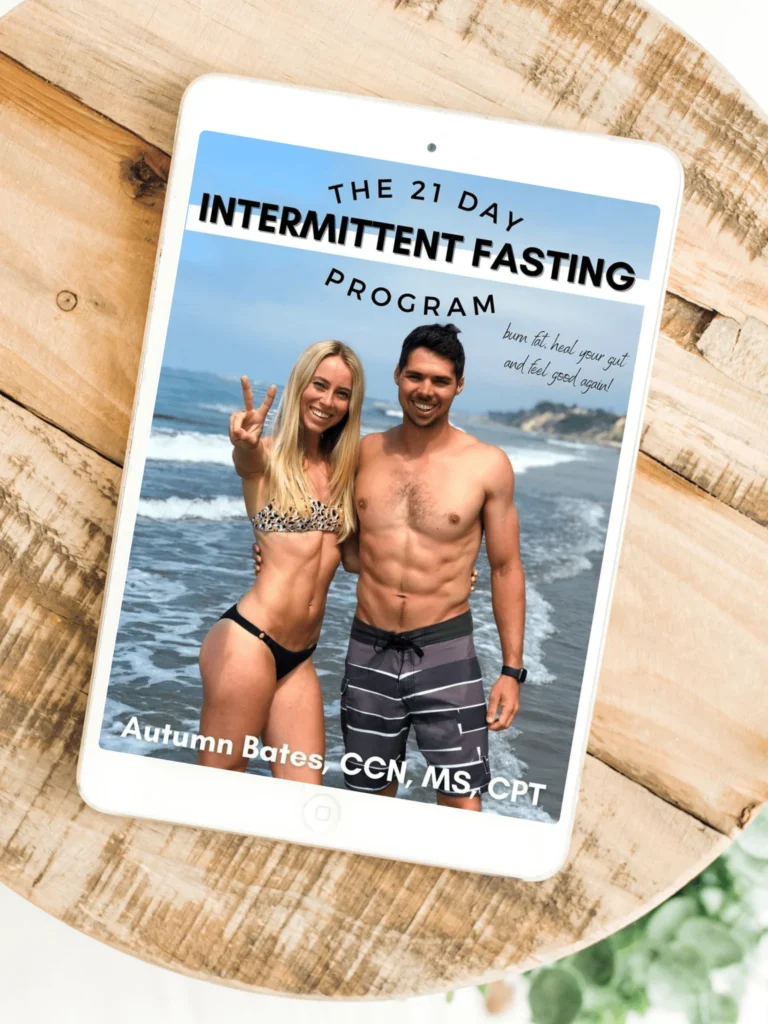
Tap into fat burning
The 21 Day Intermittent Fasting Program
The 21 Day Intermittent Fasting Program provides step-by-step strategies to help you use Intermittent Fasting with delicious, protein-packed meals to support fat loss, reduce hunger, and boost gut health.
33. Use cod liver oil
Cod liver oil is naturally rich in vitamins A and D as well as anti-inflammatory omega-3 fatty acids.
Pro-tip: if you hate the taste, first take a sip of water (but don’t swallow it yet), then take the fish oil and swallow it all at once. You won’t even taste it!
34. Watch my youtube videos
When you’re on a walk or while you cook, checkout my youtube videos. We have over 800 videos packed with simple and science-backed nutrition tips and recipes. This is a great way for you to continue to learn and apply new information to better support your wellness goals.
Head over HERE for my latest videos.
35. Print and keep a glycemic load chart handy
The glycemic load is a measurement of how much a food raises your blood sugar. Ideally, you want to stick to mostly low glycemic load foods, as these have the lowest impact on blood sugar and are typically the most nutrient dense.
You can find my free glycemic load chart HERE.
36. Print and keep a protein chart handy
Protein is crucial for losing fat while preventing the metabolism from crashing. It’s also necessary for reducing hunger and providing the most important nutrients that the body needs.
Check out the best sources of protein with my free protein chart HERE.

37. Eat more avocados
Avocados are rich in both fat and fiber that raise satiety hormones and prevent hunger.
38. Eat more sauerkraut
Sauerkraut is made by fermenting cabbage. This makes it easier to digest and helps to boost your probiotic intake from whole food sources.
39. Drink sparkling water instead of soda
I invested in a Sodastream about 4 years ago because we drink sparkling water every single night. This helps to increase hydration from water while drastically reducing added sugar intake.
40. Cook your food
When you prep your own meals you have significantly more control over what you eat. And eating at home doesn’t have to take a ton of time or be complicated. Try my viral cottage cheese bowl with the recipe below for some meal time inspo.
41. Learn how to do belly breaths
Deep breathing (aka belly breaths) helps to stimulate the vagus nerve and switch the body from “fight or flight” to “rest and repair”. This is important for stress reduction and improving digestion.
42. Stop snacking
Snacking disrupts the gut cleaning process (called the Migrating Motor Complex) and can lead to issues such as bloating.
43. Use butter, tallow, ghee, olive oil, coconut oil and avocado oil
Each of these are very high quality oils and fats that are great to use for cooking, or in the case of olive and avocado oil, great for salad dressings and marinades.
44. Know how much protein you need to eat a day
Because you’re probably eating way too little protein and it’s hurting your weight loss and long term wellness goals.
Related: How Much Protein You Need To Eat Per Day
45. Try cottage cheese
A super easy and sneaky way to add a lot of protein and vitamin K2, which is important for both bone and heart health. Not to mention, you also get a ton of calcium, too.
46. Don’t use peanut butter for “protein”
If you’ve been lead to believe peanut butter is a good source of protein, it’s not. But it doesn’t mean it’s bad for you. I love using it as a fat source in smoothies and yogurt bowls.
47. Don’t fast for longer than 18 hours
Most people will accidentally undereat (specifically on protein) if they fast for longer than 18 hours. I’ve found the sweet spot to be between 12-16 hours. This range helps to ensure you get enough food while still benefiting from eating less often throughout the day.
48. Use whey protein isolate
If you have a hard time getting enough protein, try adding a zero sugar whey protein isolate. This is the lowest lactose form of whey so it often works well for those who are lactose intolerant.
We created our zero sugar, pasture-raised whey protein powder to taste amazing in recipes. Plus, each bag comes with 10 free recipes!
Check out our DELISH bestselling protein powder HERE.
Kickstart Your Journey
Shop Autumn’s Whey Protein Powder
Our delish bestselling zero added sugar, gluten & heavy metal tested whey protein powder!
49. Cut out sugary drinks
This is one of the easiest things you can do to make significant progress with your weight loss and wellness goals.
The most common high sugar drinks include soda, energy drinks, certain coffees and teas.
50. Eat more chia seeds, artichoke hearts, and collard greens
Each of these are high in fiber and help to feed the good gut bacteria. Try using jarred or canned artichoke hearts in your salad or omelet to instantly add about 12 grams of fiber!
51. If you can, shop at a local farmers market
Shopping local helps to increase the nutrient density of your produce because it usually was picked more recently than the produce you find at the grocery store. Plus, depending on your area, you might be able to find less expensive fruits and veggies at the farmers market.
52. Use bell pepper to make a sandwich
If you are sensitive to carbs, bell peppers make a great and CRUNCHY bread alternative!
53. Try Ezekiel bread
If you are less carb sensitive, you can experiment with Ezekiel bread. It’s been sprouted to reduce anti-nutrients and boost the nutritional quality. It also tends to be lower glycemic load and higher in quality protein than typical bread.
54. Add bone broth to soups, stews and chili
Bone broth is an excellent tool for adding a whole food source of collagen to meals.
I love the brand Kettle & Fire when I’m in a pinch and don’t have time to make my own. You can get it for 20% off with my code AUTUMNBATES at checkout HERE.
55. Eat oysters
Just one oyster has nearly 90% of your total daily vitamin B12 needs!
56. If plant-based, eat tempeh
Although animal-based sources of protein are much more nutrient dense and higher quality, tempeh is the best plant-based source of protein. It’s fermented to reduce the anti-nutrients naturally found in soy.
57. Soak and cook your own beans and chickpeas
Beans and chickpeas are great low to medium glycemic load sources of starch and fiber. You can save money and reduce the chances of bloating by soaking and cooking your own beans. Just soak it in water with one teaspoon of baking soda the night before and cook it the next day!

58. Experiment with zero or low sugar sauces
Sauces don’t have to be the enemy. In fact, sauces help to add vibrance and flavor to your meals, which is important for keeping you excited throughout your wellness journey. You can make your own or try options from brands like Primal Kitchens.
Some of my favorite sauces to make are red enchilada sauce, pesto and marinara.
59. Try protein smoothies
This is a fast and easy way to pack in all of the nutrients you need in one meal.
Try one of my favorite protein smoothies HERE.
60. Try protein pancakes and waffles
I ate protein pancakes or waffles nearly every single morning throughout my postpartum weight loss journey. This is one recipe I’ll never get sick of!
Try it HERE.
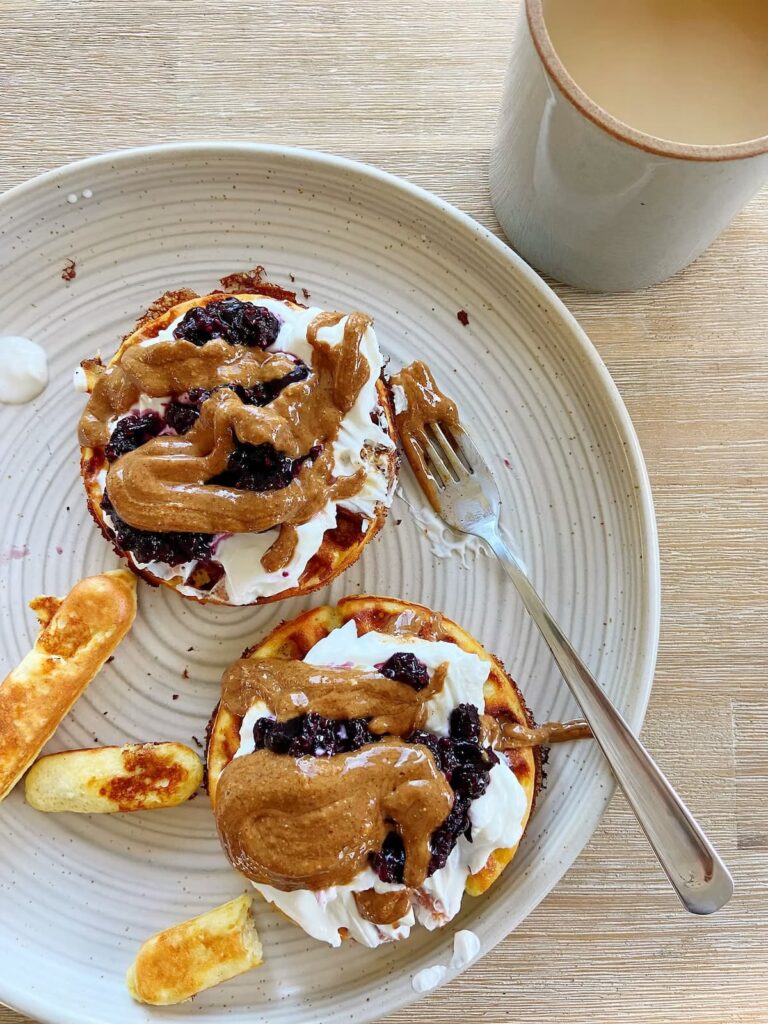
61. Try grain-free oatmeal
Regular oatmeal has been found to spike a lot of people’s blood sugar and make them feel hungry quickly. Instead, try grain-free oatmeal with a combination of chia seeds, flax seeds, almond flour and greek yogurt.
You can find my recipe HERE.
62. Use an InBody
This measures body fat and muscle mass, which are ideal markers when on a weight loss (body recomposition) journey. You can often find an InBody machine at a local gym.
63. Use a tape measurer
If you can’t find an InBody, using an old school tape measurer is your next best choice. This gives you a better idea of if you’re losing body fat while losing weight.
Good measurements to track are your hips, waist, bust, neck and arms.
64. Eat three full meals and eat until satisfied
This has been found to be better at preventing hunger than eating 6 small meals throughout the day. Just make sure you’re eating the right foods.
Related: The Body Recomposition Meal Plan

50+ NEW RECIPES!
The Body Recomposition
Meal Plan
The 6 Week Summer Meal Plan is focused on the science-backed tips, tools and recipes to help achieve a body recomposition goal.
65. Ditch the scale
The scale is a horrible method of tracking weight loss progress. It does not tell you if the weight you lost or gained is coming from muscle, fat or water.
This matters a lot.
Checkout my video below for why it matters.
66. Try paleo bread
If you’re carb sensitive, this is a great low carb and more nutrient dense swap. I like the brand Base Culture. Just make sure to only use their frozen bread, NOT the shelf stable one.
67. Switch to better alcohol
If you drink, try using zero or very low sugar alcohols, such as Dry Farm Wines.
68. Don’t eat protein bars
These don’t contain very much protein and usually have a lot of sugar in the form of tapioca starch and cane sugar.
69. Cut out energy drinks
These have a lot of caffeine and zero nutritional value. Instead, get a natural dose of caffeine from coffee, which is also loaded with important antioxidants.
70. Cut out most high glycemic load foods
High glycemic load foods cause a big spike in blood sugar and contain little to no nutritional value. They also are very easy to overeat and can even sometimes cause addictive like behavior.
Checkout my glycemic load chart HERE.
71. Wake up early
When you wake up earlier (after going to bed early as well), you have more time to go for a walk, do a workout, get outside, make your coffee and prep your breakfast. All this extra time means you start your day feeling calm instead of rushed.
72. Walk and move before you do anything else in the morning
When you wake up early, make time to move in some way immediately. This could be a walk or a workout. Whichever you choose, just make sure you do it before you do anything else.
When you walk or workout first thing in the morning, it helps to wake you up naturally and get a head start on those important walking steps. Plus, if you take your walk outside, it can help to reduce the stress hormone cortisol and get your day started on the right foot.
73. Watch your fat to protein ratio
If you eat lower carb and higher fat, watch out for accidentally eating too little protein. It’s easy to make a high fat smoothie or meal while skimping out on the important protein.
A good rule of thumb is to aim for at least 30 grams of complete protein per meal.
74. Learn delicious, high protein recipes
Speaking of protein, make sure you know some tasty recipes!
Check out my low carb, high protein Shepherd’s Pie recipe HERE.

75. Know your high protein options while at an airport
When traveling, protein can be especially sparse. Great high protein options that can often be found at the airport include beef jerky, meat sticks, hard boiled eggs, burgers (without the bun), cheese and egg bites (these are usually at Starbucks).
77. Join a community of likeminded folks
Making change can always be a little daunting, but it gets a lot easier when you have people on your side rooting you on. Our private (and free!) facebook group has over 21,000 members who are supportive, positive and very excited to be part of your journey.
Head over HERE to join us!



